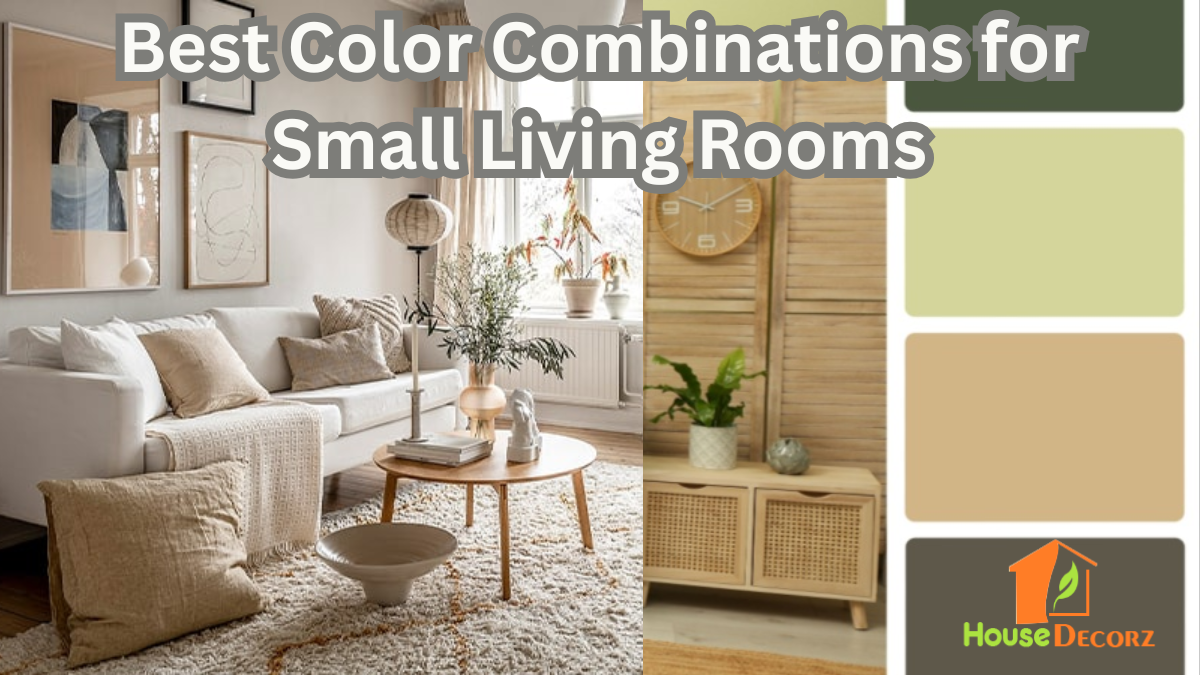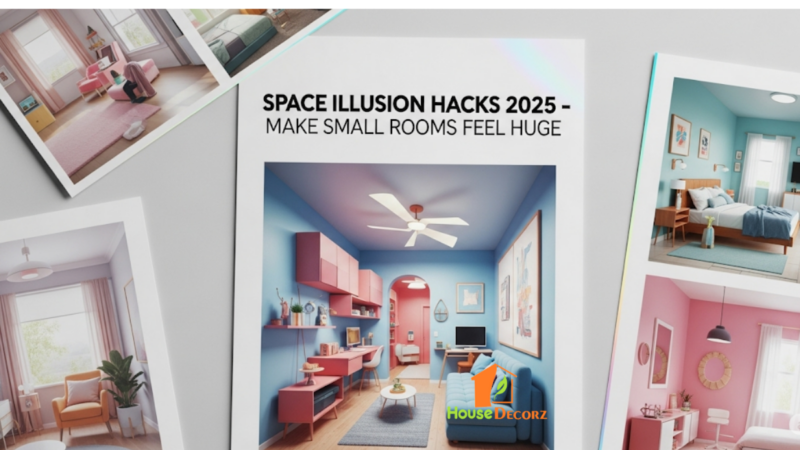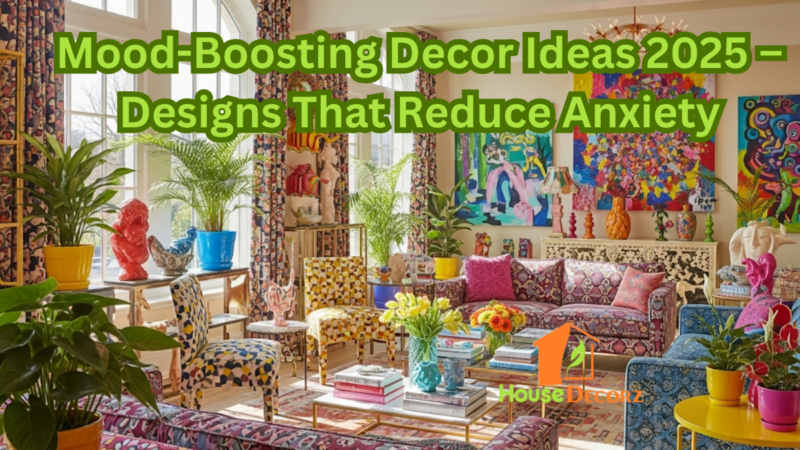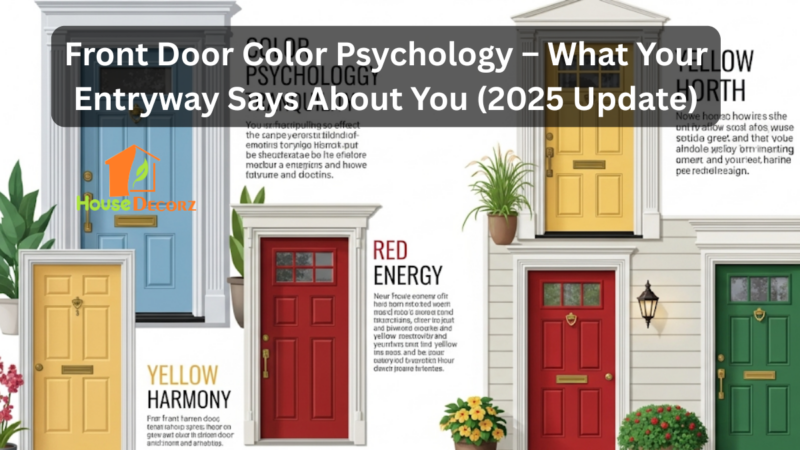Best Color Combinations for Small Living Rooms

Designing a small living room can feel like a challenge — how do you make a limited space feel open, inviting, and stylish without overwhelming it? The good news is that with the right color combinations, even the tiniest of living rooms can look spacious and beautifully pulled together. Choosing the best color combinations for small living rooms is a simple yet effective way to visually expand your space, create depth, and set the perfect mood for your home.
Whether you prefer soft neutrals, bold contrasts, or calming pastels, color can dramatically transform the way a room feels. In this guide, we’ll explore top combinations and small living room color ideas to help you maximize your space in both size and style.
Why Color Choice Matters in Small Spaces
Colors influence how we perceive space. Light shades typically make a room feel larger and more airy, while darker hues can add warmth and coziness when used thoughtfully. Combining colors the right way can:
- Create visual depth.
- Draw attention to specific areas.
- Balance proportions.
- Enhance natural light.
Pairing complementary tones also introduces character and sophistication, making your small living room not only functional but visually appealing.
Top Color Combinations for Small Living Rooms
1. Soft White and Pale Grey
A classic and foolproof pairing, soft white walls paired with pale grey accents give a room a clean, airy look. This neutral palette reflects natural light, making the space feel more open and inviting.
Pro Tip: Add texture through grey throw pillows, rugs, and curtains to keep the look from feeling flat.
2. Warm Beige and Dusty Blue
This cozy combination balances warmth and coolness perfectly. Space-enhancing colors like warm beige help walls recede, while a hint of dusty blue on accessories or a feature wall introduces subtle contrast without making the space feel crowded.
Idea: Use blue cushions, vases, or a painted console table to introduce color without overwhelming the room.
3. Sage Green and Off-White
Nature-inspired tones like sage green create a calm, refreshing vibe — ideal for small living rooms where you want to unwind. Pair it with off-white for a soft, harmonious contrast that feels both modern and timeless.
Why it works: Sage is a muted shade, so it adds color without making the space feel enclosed.
4. Blush Pink and Charcoal
A surprisingly elegant option, blush pink paired with a deep charcoal accent can bring sophistication to a small space. The trick is moderation — keep most surfaces light and use charcoal sparingly on trims, a single wall, or soft furnishings.
Style Tip: Balance with metallic or glass décor to reflect light and enhance openness.
5. Light Taupe and Soft Teal
For those who want a hint of color without overwhelming a compact space, light taupe walls combined with soft teal accessories strike the perfect balance. Teal works well in small doses, offering a pop of vibrancy against a neutral backdrop.
Suggested uses: Teal cushions, a patterned rug, or an accent chair.
Tips for Maximizing Space with Color
Alongside choosing the best color combinations for small living rooms, here are a few practical tricks to make the most of your space:
- Use mirrors to reflect light and make the room appear larger.
- Keep flooring consistent in open-plan areas for a seamless look.
- Paint trims and moldings in a lighter shade than your walls to increase the sense of height.
- Limit overly busy patterns to avoid visual clutter.
- Layer neutral tones with subtle pops of color for depth and interest.
Recommendation
How to Decorate a Small Living Room to Look Bigger
Top 10 Sofa Trends Dominating USA Living Rooms in 2025
Top Minimalist Living Room Ideas 2025 – Cozy & Space-Saving Trends
Living Room Curtain Ideas: Style, Comfort & Elegance for Every Home
Living Room Indoor Plants Decoration Ideas
FAQ
Q1: What are the best light colors to make a small living room feel bigger?
Soft whites, pale greys, warm beiges, and off-whites are excellent choices as they reflect natural light and visually expand the room.
Q2: Can dark colors work in a small living room?
Yes — when used strategically. Dark hues like charcoal or navy can add depth and coziness when balanced with lighter tones and natural light.
Q3: Are bold color combinations suitable for small spaces?
They can be, but it’s best to use bold shades sparingly. Try a bright accent wall, colorful artwork, or vibrant cushions to introduce color without crowding the space.
Q4: Should furniture color match the wall colors?
Not necessarily. Contrasting furniture adds interest, but keeping larger pieces in neutral shades while adding colorful accents can maintain a spacious feel.
Q5: How can I use patterns without making the room feel cramped?
Stick to subtle, small-scale patterns on cushions, throws, or rugs. Avoid busy wallpapers or large patterned furniture in tight spaces.
Final Thoughts
Choosing the best color combinations for small living rooms is one of the easiest and most effective ways to enhance the feel of a compact space. By pairing soft neutrals with gentle pastels or strategic accents, you can make your living room feel open, stylish, and personal. With these small living room color ideas and practical tips, even the smallest home can feel welcoming, balanced, and beautifully designed.






